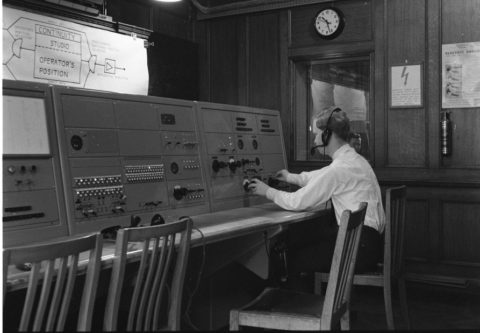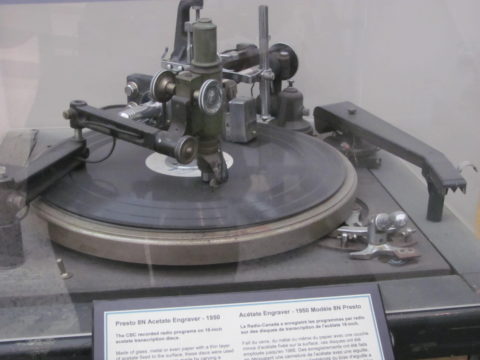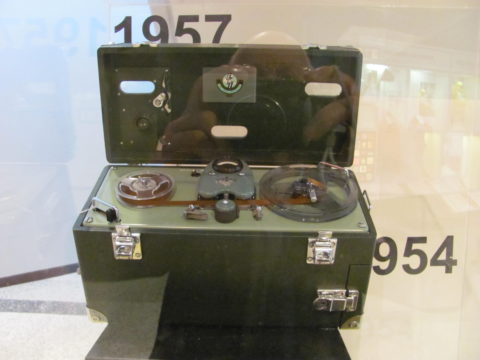The New Control Room (BH London)
The New Control Room on the first floor of BH Extension had a different technical layout than the previous wartime Control Room. Gone were Incomings and Outgoings; instead they had the Multiple Switching Position MSP. The Multiple or “Mult” was the name for the uniselector switching system. The Simultaneous Broadcasting Position (SB) was still there dealing with the regions and transmitters. There was an Outside Broadcast (OB) position and a Television Sound position, (which had also been on the balcony in the Old Control Room). The “Bays“ of the old Control Room were replaced by Control and Monitor Positions (C&Ms). [Later in my career when I was a Lecturer at the Engineering Training Department, I was telling a course of male and female Studio Managers about London Control Room. As I mentioned the SB position the OB position and the MSP position some of them started to grin. When I got to the C&M position they were nearly in hysterics! Contact me for an explanation if you don’t understand!]
Most of my work in the New Control Room was on the C&Ms. Occasionally I would be chosen to operate the three channel mixers which were in a separate cubicle in the Control Room, and used for some foreign dispatches, and the Shipping Forecast on Long Wave.
It was in the New Control Room where I sent +24 decibels signal level to the Long Wave transmitter at Droitwich. This event is remembered even today by ex-Control Room Staff!
About this time in March 1962 I went on TO Course 13 at Wood Norton. Here is a photo of me in the Wood Norton Control Room, where I could do less harm.
On return to London I was move into the XP unit, which did tape editing and worked in the studios on transportable tape machines; actually TR90s on wheels, hence the name XP, transportable. I never knew if this was because of my error but I gained a lot of experience of tape editing, and working with producers. At my level I was only in the recording channels, but my colleagues worked on the Jack Jackson show actually in the studio cubicle. (For readers from a television background, in Radio, the place where the artists work in called the Studio, the place where the Studio Managers and the mixing desk is located is called the Cubicle. They are connected visually by a double glazed window, as in Television).
Some of my recording in London was on disk, and on a trip to CBC in Canada a few years ago, I came across the same model of disk cutter that I had operated.
I also found the so called “Midget” tape recorder used by reporters at this time. It used 5 inch reels of standard tape, and could record for seven and a half minutes on full track. In 1961 the midget recorder was used for interviews. The recorded tape was then taken to an editing channel. Editing standard tape at 7 and a half inches per second was no problem, the BTR2 tape machine which was used for editing could be switched to 7 and a half ips. Later these field recorders were changed, first to the Ficord and then to the Uher tape recorder. The Ficord presented a problem because it used long play tape which was thinner. When spooled back on a BTR2 the heavy machine from a German design stretched the tape! So we had to copy from the recorder first. Not convenient with an urgent news story and a deadline.



![London Control Room; Christmas 1961. Note the “Drop Flap” telephone exchanges.The metal flaps would actually drop from the energy created by someone turning the handle of a telephone to ring, often from hundreds of miles away. [for the technical readers 50 Hz at 80 volts]](http://www.pebblemill.org/wp-content/uploads/2016/04/London-Control-Room-480x360.jpg)